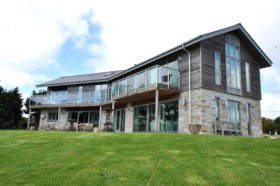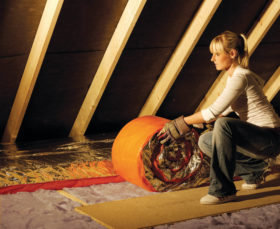
Learn from the experts with our online training course!
Use the code BUILD for 20% off
Learn from the experts with our online training course!
Use the code BUILD for 20% offSelf-building always takes a little longer and costs a bit more than you initially think it will. I have yet to meet a self-builder brandishing handfuls of spare cash at the end of their project, wondering what to spend it on. The reality is that most of us have to be very careful about what we decide to do with our finite supply of funds.
The advice I’ve offered on the self-build courses I deliver at the National Self-Build and Renovation Centre (NSBRC) in Swindon is that you should spend your money on the permanent items and concentrate on the fabric of the structure first; as these are elements that you’re unlikely to replace. As kitchens and bathrooms go in and out of fashion, a periodic refreshing of one or both can completely revitalise a house.
Therefore, if you are on a budget I’d advise that you aim for the affordable end of the spectrum in these spaces and upgrade a few years later, when your finances have recovered from the initial shock of the build.
When we constructed our home 10 or so years ago, money was tight, so our builder’s merchant provided the internal elements. We went to one supplier for the majority of the fixtures and fittings outside the main package, provided by Design & Materials, so we could negotiate the best discounts on our trade account.
We ended up decking out our kitchen for a little over £6,000 including appliances, which looking back was fantastic value. And it really did serve us well, but after more than a decade of use, the years of punishment inflicted on it by a growing family were starting to show.
We needed to get a new one so it was time to practice what I preach again – I’ve always advised course attendees that while ready-made kitchens are fantastic things. After all, your local carpenter can probably knock up a bespoke set of carcasses in the same time it would take them to assemble a flat pack version, and at a similar cost.
But when we looked at both options we chose another flat pack! What swayed us towards the latter was the ‘free’ design and installation service that went with buying this type of kitchen. Also, because our original setup was designed to accept units in standard 100mm multiples, replacing them with similar ones made sense. Having shopped around, we found that the upper end of the flat pack market offered some really good quality options within our price range.
It’s true you get what you pay for, but I still don’t understand why granite worktops are so expensive. It’s not as if it’s a rare substance – Aberdeen is almost entirely built of the stuff. The whole job was not a cheap exercise, but I do think that the cost of the upgrade will be reflected in the value of our home.
Main image: The Vermonted fitted kitchen with central island unit by Fired Earth

